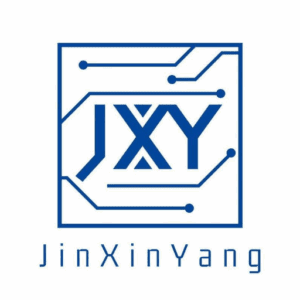deletekayak55
About
- Username
- deletekayak55
- Joined
- Visits
- 1
- Last Active
- Roles
- Member
Activity
-
The world of electronic devices is perpetually developing, and at the heart of this shift lies the printed circuit board. As the basis for nearly most electronic devices, PCBs act as the crucial component that contains and links various electronic parts. With the increasing demand for more efficient, compact, and advanced electronic systems, manufacturers are constantly exploring creative PCB manufacturing techniques. This summary will explore the various techniques and technologies that characterize state-of-the-art PCB manufacturing today.
From classic rigid PCBs to the modern flexible circuit boards, the diversification in PCB types is remarkable. Flexible PCBs, often known as flex PCBs, provide unique benefits that are essential for applications where area and weight are critical. Moreover, developments in PCB assembly, particularly in the area of components like LED boards and copper clad laminate, have expanded the frontiers of what is achievable in circuit design and functionality. As we explore these advanced techniques, we will learn how they enhance performance and reliability while meeting the strict requirements of modern electronics.
### Understanding PCB Manufacturing ProcessesThis manufacturing of printed circuit boards, or PCBs, entails several detailed procedures that confirm the functionality and reliability of electronic devices. First, the design is created using Computer-Aided Design software, which enables engineers to outline the layout, including traces, pads, and mounting holes. After the design is finalized, it is converted to a photo-sensitive material on the copper-clad laminate, which is then exposed to ultraviolet light. That step enables for the pattern of the circuit to be etched onto the board.
Following the etching process, the unwanted copper is eliminated, leaving behind the desired circuit patterns. It is often done through chemical processes that ensure precision and efficiency. The next important step is drilling, where holes for component leads and vias are created. This is essential for connecting different layers of the PCB, especially in multi-layer boards. After drilling is completed, the board undergoes plating, which can involve applying a layer of copper to enhance electrical conductivity and ensure good connections.
After the initial manufacturing steps, the PCB is then ready for assembly, where electronic components are soldered onto the board. Depending on the application, different assembly techniques are used, such as surface mount technology (SMT) or through-hole technology. Flex PCBs add another layer of complexity, as they require unique handling and processing to ensure the flexible circuit board retains its integrity while allowing for the necessary electrical connectivity. These sophisticated processes culminate in the production of high-quality PCBA, ready for integration into various electronic products.
Advancements in Flexible PCB Design
Bendable PCBs have revolutionized the electronics sector by allowing for unique and effective product designs. Latest developments in materials and production processes have enhanced the capabilities and resilience of flexible circuit board s. Modern innovations include the use of superior polyimides and enhanced surface treatments that boost heat resistance and flexibility, making these boards suitable for a wider range of applications, from consumer electronics to medical devices.
Additionally, the integration of innovative technologies in the production of flexible PCBs has simplified the assembly process. Techniques such as roll-to-roll manufacturing facilitate high-volume production with reduced waste and lower costs. Moreover, the use of laser cutting and advanced printing technologies facilitates the creation of intricate designs and delicate features on bendable substrates, enhancing the capabilities of manufacturers to meet complex design needs.
The development of multi-layer flexible PCBs has created new possibilities for circuit density and functionality. By stacking multiple layers, engineers can create compact designs that integrate more circuitry without increasing the overall footprint. This is particularly beneficial in applications like wearable devices and miniature electronics, where space is at a premium. As the industry continues to evolve, bendable PCBs are set to play a critical role in the future of electronic circuit design.
Key Aspects of PCB Assembly and Testing
The PCB assembly process is essential in guaranteeing that the components are firmly placed and connected on the PCB board. This involves a set of steps, including solder paste application, installation of components, and reflow soldering. Each stage must be executed with care to avoid defects that can lead to malfunction. Cutting-edge technologies such as robotic assembly systems enhance the efficiency and accuracy of the process, allowing for higher production speeds and consistency.
Testing is an essential part of the PCB assembly process, ensuring that the assembled board operates as intended. Various testing methods are employed, including visual inspection, electrical testing, and functional testing. Automated Optical Inspection (AOI) is often used to detect solder joint defects and component placement errors. Moreover, functional testing involves assessing the complete operation of the assembled PCB, modeling actual operating conditions to verify performance and reliability.
Quality control throughout the assembly and testing phases is paramount. Manufacturers implement strict standards and protocols to secure the integrity of the PCB. This includes using high-quality materials like copper clad laminate and complying with industry standards for flexible PCBs and LED boards. Continuous improvement initiatives and adherence to best practices in PCB assembly and testing lead to superior product outcomes and customer satisfaction.
 September 6
September 6